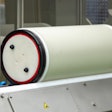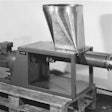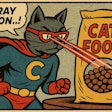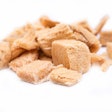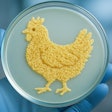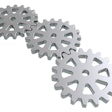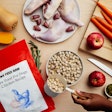
With money tight and financial controllers questioning product input costs, arguably there has never been a better time to review recipe costs.
What scope is there to reduce costs in wet petfood? The product developer has to balance other factors, including:
- Palatability, digestibility and fecal quality;
- Product appearance and texture; and
- Regulatory frameworks-for example, designating the product as a complete diet.
These factors can often limit the scope. However, cost reduction can often be achieved through optimizing usage of gels and thickeners.
Gel it, thicken it, stabilize it!
Gels and thickeners (hydrocolloids) fulfill a wide range of process and product roles in wet petfood. Key functionality includes:
- Pre-process viscosity -this is most commonly achieved using thickeners like guar gum, xanthan gum and modified starch. These generate viscosity for filling, before sterilization, and help keep insoluble materials such as minerals and chunks in suspension. They can also help minimize packaging seam defects due to gravy spillage.
- Gelled texture -with chunks-in-jelly and chunks-in-loaf formats, gelling agents like carrageenan, typically in combination with a synergist, have key roles in generating the desired texture.
- Meat analog texture -gelling agents can provide a chemically set mechanism for the formation of reformed, meat analog chunks. While other systems have been used, the most common system is based on the use of sodium alginate technology.
- Gravy texture -with chunks-in-gravy formats, thickeners and starches are used to give post-sterilization texture. Some gelling agent recipes can also be used for this purpose.
- Sauce texture -thickeners and starches (and some gelling agents) generate the texture of sauces used as a coating for dry petfood.
- Stabilization -thickeners and some gelling agents like sodium alginate and carrageenan play vital roles in avoiding phase separation (solids dropping out of suspension and formation of different liquid layers) in products like cat milk drinks.
The problem with carrageenan
Carrageenan is a great material with some fantastic properties. In the context of wet petfood, arguably the synergistic interaction between kappa-carrageenan (which forms a weak, brittle gel in the presence of potassium ions) with a non-gelling hydrocolloid, a synergist-for example, locust bean gum or cassia gum-to form elastic gels is the most important functionality.
In addition, carrageenan finds a wide range of other applications, but this functionality often comes at a price, especially as there are no cheap alternatives for applications like the synergistic interaction with gums. The problem relates primarily to price variation due to the effects of the naturally occurring phenomenon known as El Niño. During El Niño events, the sea temperature around Indonesia and the Philippines increases. This affects growth of commercial Eucheuma cottonii seaweed-used for manufacturing kappa-carrageenan-and gives rise to shortages.
Although typically used at low inclusion levels, the market price of semi-refined carrageenan can have a significant impact on recipe costs. Therefore, optimizing gels and thickeners offers opportunities for cost reduction, bringing with it additional benefits to product quality, palatability and fecal quality.
Getting it right
A prerequisite to reducing the cost gels and thickeners is a sound understanding of their science and technology. This is applicable to all product formats where these ingredients are used. When lack of fundamental understanding of the gels functionality exists, it is possible to create a completely gelled texture in a chunks-in-gravy format, not what the customer expects!
To minimize risk to product quality, customer satisfaction and your brands, consider a holistic approach covering the whole supply chain from raw material vendor to the feeding bowl. Though this list is not exhaustive (Figure 1), key factors include:
- Product design -ingredients, recipe, nutritional specification, palatability, fecal quality, cost;
- Raw material risk management -specifications, supplier conformance, supply constraints, cost;
- Processing of the recipe components -meat, chunks, gravy, finished product sterilization, post-retort handling;
- External factors -supply chain environment, trade relationships, customer complaints, legislation, regulatory.
These factors provide a framework, applicable to all wet petfood formats, against which producers can evaluate gels and thickeners cost optimization while minimizing and controlling risks.
If you apply a holistic approach, based on the scientific principles underlying gels, significant cost savings are achievable. An example for a typical chunks-in-jelly (CIJ) product (Figure 2) shows the price difference between two recipes based on the use of semi-refined carrageenan in combination with a synergist to generate the desired texture characteristics.
As petfood producers look to ride out the effects of the global economic downturn and save money to reinvest in their products and facilities, arguably there isn't a better time to look at gels and thickeners. Pets can benefit, too, through improved palatability and fecal quality.



